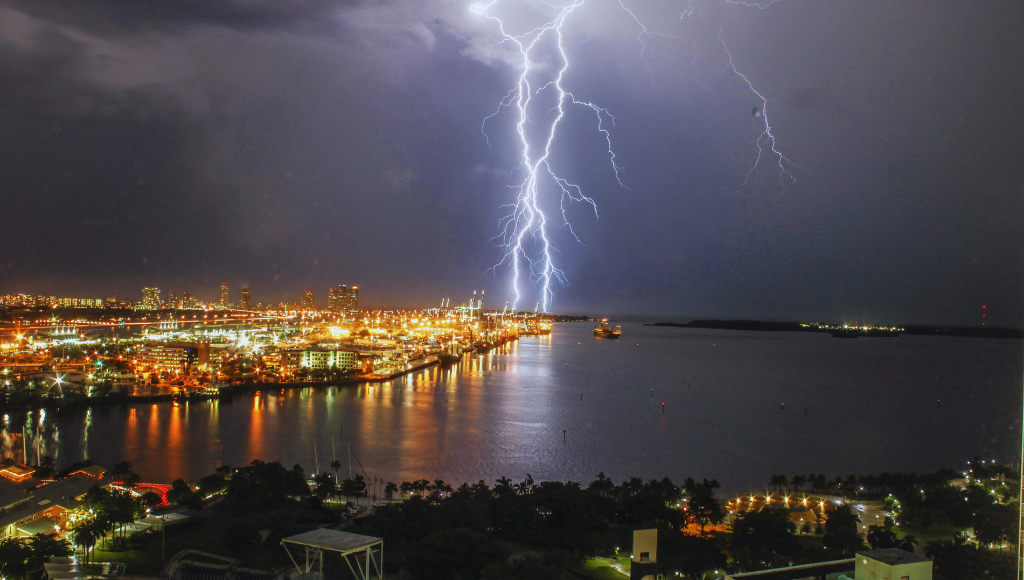Lightning strikes are a powerful force of nature that can devastate homes. Do you know that according to Florida Today, Florida ranks second in the U.S. for the lightning count, seeing over 19 million lightning events in 2023? It also notes that Florida has the highest lightning density in the country, with 112.6 lightning events per square kilometer. Recognizing the signs that your house has been struck by lightning is crucial for ensuring the safety of your property and family.
In this article, we will explore five common signs that indicate your house may have been struck by lightning and what steps you should take if you notice any of these signs.
Burn Marks or Scorching
One of the most obvious signs that your house has been struck by lightning is the presence of burn marks or scorching on the exterior or interior surfaces. These marks can vary in size and intensity, depending on the severity of the lightning strike. Burn marks may appear as charred areas on walls, roofs, or other surfaces where the lightning made contact.
When lightning strikes a building, the intense heat generated can cause materials to combust or melt, leaving behind distinct burn marks. These marks are often accompanied by a strong smell of smoke or burning. It is essential to inspect your home carefully for any signs of burn marks or scorching after a thunderstorm to assess the extent of the damage.
Electrical System Damage
Lightning strikes can wreak havoc on the electrical systems of homes, leading to a range of issues that pose serious safety risks. When a lightning bolt hits a house, it can surge through the electrical wiring, damaging appliances, outlets, and circuit breakers. Signs of electrical system damage include flickering lights, outlets that no longer work, or appliances that suddenly stop functioning.
In some cases, a lightning strike can cause electrical fires within the walls of a house, which may not be immediately visible but can pose a significant threat. If you suspect that your home has been struck by lightning, it is crucial to have a qualified electrician inspect your electrical system to identify and address any damage promptly.
Water Damage
Another common consequence of a lightning strike on a house is water damage. Lightning can cause pipes to burst, roofs to leak, or windows to break, leading to flooding and moisture issues within the home. Water damage can be insidious, causing mold growth, structural weakening, and health hazards if not addressed promptly.
After a thunderstorm, it is essential to check for signs of water damage in your home, such as damp walls, ceilings, or floors, musty odors, or visible leaks. Addressing water damage promptly is crucial to prevent further deterioration of your home’s structure and to safeguard the health of your family.
Structural Damage
Structural damage is another telltale sign that your house may have been struck by lightning. Lightning strikes can cause cracks in walls, ceilings, or foundations, compromising the integrity of the building. In severe cases, a lightning strike can even cause structural collapse, posing a significant risk to occupants.
Inspecting your home for signs of structural damage after a thunderstorm is essential to ensure the safety of your family and property. Look for cracks, bulges, or other abnormalities in the walls, ceilings, or floors that may indicate structural weakening due to a lightning strike.
Unusual Odors or Sounds
Unusual odors or sounds can also be indicators that your house has been struck by lightning. The electrical discharge of a lightning strike can produce distinct smells, such as ozone or burnt insulation, that linger in the air after the storm has passed. Additionally, you may hear popping, buzzing, or crackling sounds coming from electrical outlets or appliances, signaling potential damage from a lightning strike.
If you notice any unusual odors or sounds in your home following a thunderstorm, it is essential to investigate the source and take appropriate action to address any potential hazards. Ignoring these signs can lead to further damage or safety risks that could have been prevented with prompt intervention.
Safeguard Your Home from Lightning Damage
In conclusion, recognizing the signs that your house has been struck by lightning is crucial for protecting your property and ensuring the safety of your family. By being aware of the five common signs discussed in this article – burn marks or scorching, electrical system damage, water damage, structural damage, and unusual odors or sounds – you can take proactive steps to address any issues and prevent further damage.
If you suspect that your house has been struck by lightning, it is essential to contact a qualified professional, such as an electrician or structural engineer, to assess the extent of the damage and recommend appropriate repairs. By being vigilant and proactive, you can mitigate the impact of a lightning strike on your home and safeguard your family from potential hazards.




